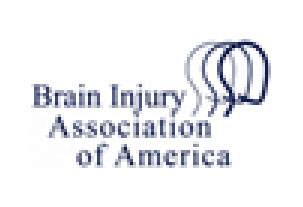Hydrocephalus, once known as “water on the brain,” is a condition in which there is excessive accumulation of fluid in the brain. The fluid is cerebrospinal fluid (CSF), which is a clear fluid surrounding the brain and spinal cord that keeps brain tissue buoyant, delivers nutrients to the brain and removes waste, and flows between the cranium and spine to compensate for changes in the amount of blood in the brain. With hydrocephalus, the excess CSF causes an abnormal widening of the four ventricles in the brain, which leads to harmful pressure on brain tissue. This form of brain damage can manifest itself as cerebral palsy, a birth injury that results from damage to the cerebrum, which controls motor skills, sensory functions and cognitive thought.
Hydrocephalus falls into two categories in terms of its causation: congenital hydrocephalus, when it is present at birth and caused by something that happened during the fetal development or by genetic abnormalities, and acquired hydrocephalus, when it is caused by birth trauma or an accident later in life. According to the National Institute of Neurological Disorders and Stroke (NINDS), experts estimate that hydrocephalus affects one in 500 children. It is considered a common birth defect, according to the National Hydrocephalus Foundation, with more than 50 percent of hydrocephalus cases being congenital. A common birth trauma-related cause of acquired hydrocephalus is complications during a premature birth, such as intraventricular hemorrhage. When birth trauma causes hydrocephalus resulting in cerebral palsy, an experienced cerebral palsy attorney can advise you of your legal rights.
Symptoms
Symptoms can vary according to age, disease progression and variations in each individual’s ability to tolerate the condition. For infants, symptoms of hydrocephalus include the following:
- Rapid increase in head circumference or an unusually large head size, also known as macrocephly, which is the most obvious symptom. Signs of macrocephly may include high-pitched crying or screaming, distended veins in the scalp, misshapen head, loss of vision, or weakness or spasticity of limbs.
- Vision problems, including blurred or double vision. An infant suffering from hydrocephalus may also experience an inability to look upwards, also known as sunsetting of the eyes.
- Headaches.
- Sleepiness or irritability.
- Vomiting or nausea.
- Seizures.
Treatment and Prognosis
The most common treatment for hydrocephalus is surgery in which a shunt system is inserted. The system has three parts: a shunt, a catheter and a valve. The shunt is a flexible but sturdy plastic tube that runs from a catheter placed within a ventricle inside the brain to another placed elsewhere in the body where the CSF can drain and be absorbed, such as within the abdominal cavity or areas around the lungs. The valve maintains and regulates the CSF flow. Shunt systems involve many risks, such as mechanical failure, infection, obstruction and the need for catheter adjustments or replacements. The systems require regular follow-up care with a medical professional, which can become quite costly over time. According to the National Hydrocephalus Foundation, annually, CSF shunting procedures account for approximately $100 million in U.S. health care spending.
For a small number of patients, an alternative treatment is available called third ventriculostomy, in which a doctor uses a fiber-optic camera to view the ventricular surface and then makes a tiny hole in the third ventricle.
According to NINDS, predicting a patient’s prognosis is difficult. The condition poses risks to cognitive and physical development, and children with hydrocephalus may have life-long special health needs. MedlinePlus reports that untreated hydrocephalus has a 50 percent to 60 percent death rate, with survivors suffering various degrees of intellectual, physical and neurological disabilities. The Hydrocephalus Foundation estimates that as many as 75 percent of children with hydrocephalus will have some form of motor disability, which may include cerebral palsy.
Hydrocephalus and cerebral palsy can require costly lifetime care, and if medical malpractice, negligence or error might have caused your child’s birth injury, contact a compassionate and experienced cerebral palsy lawyer to discuss your legal rights and pursue the financial compensation to which your family might be entitled.













